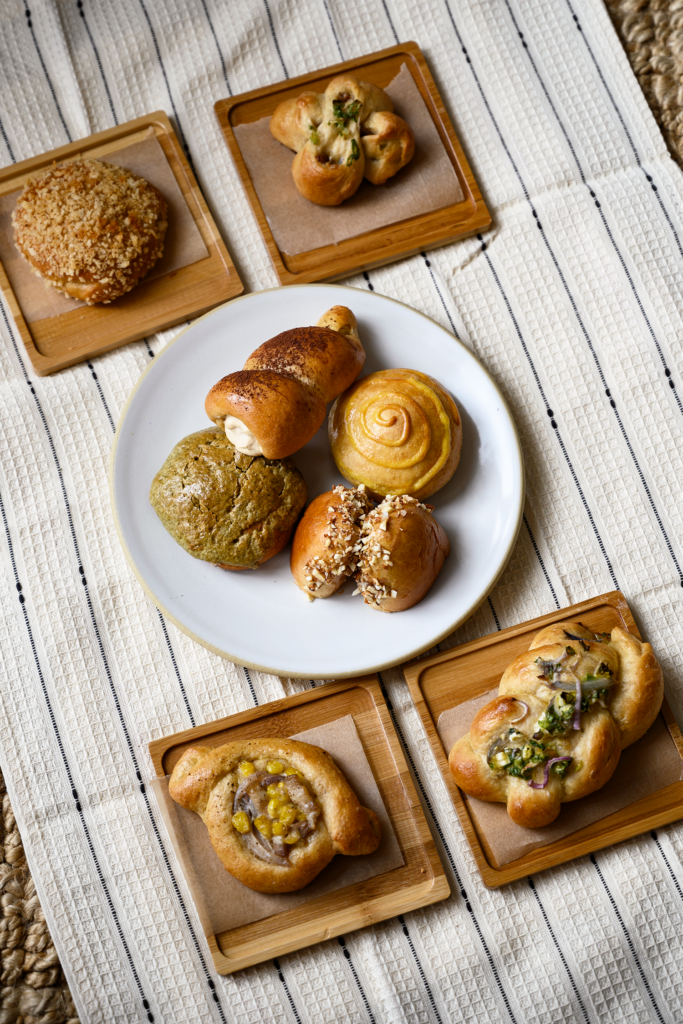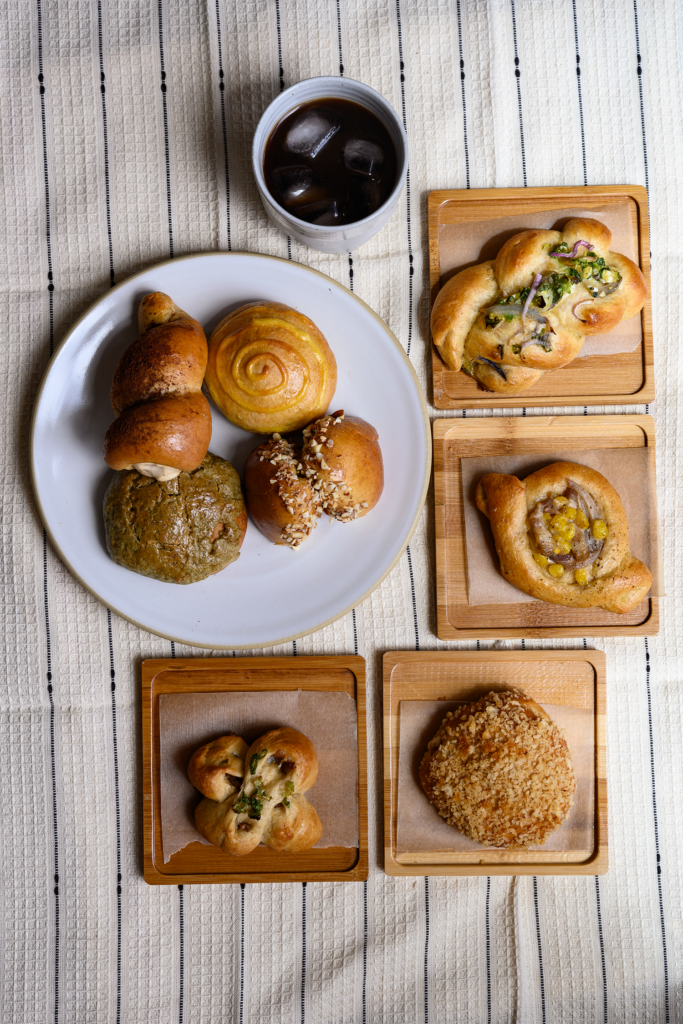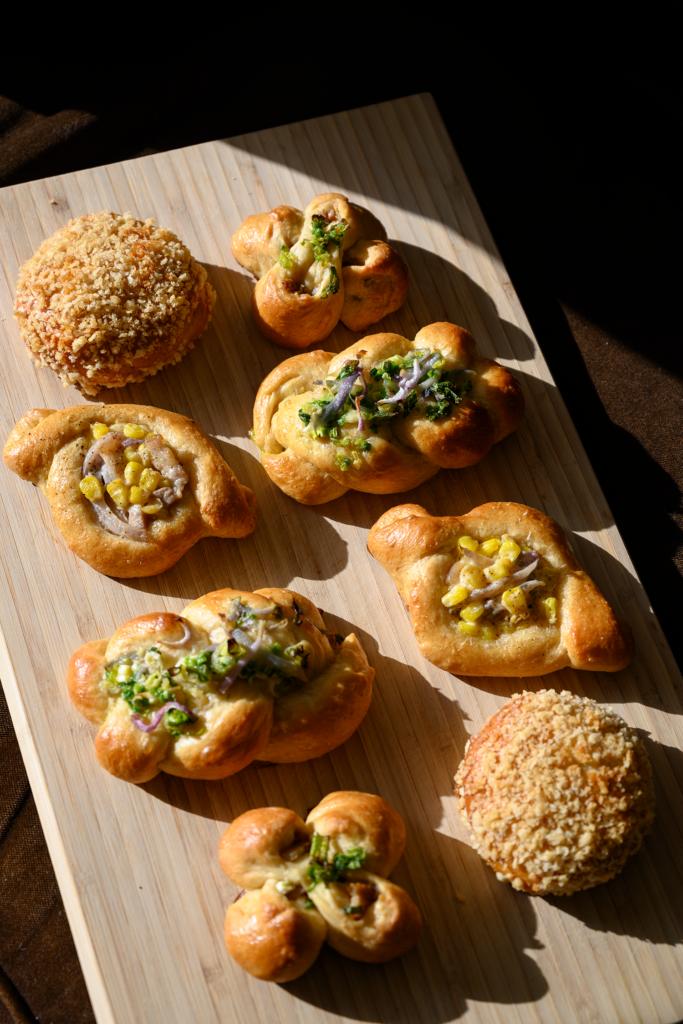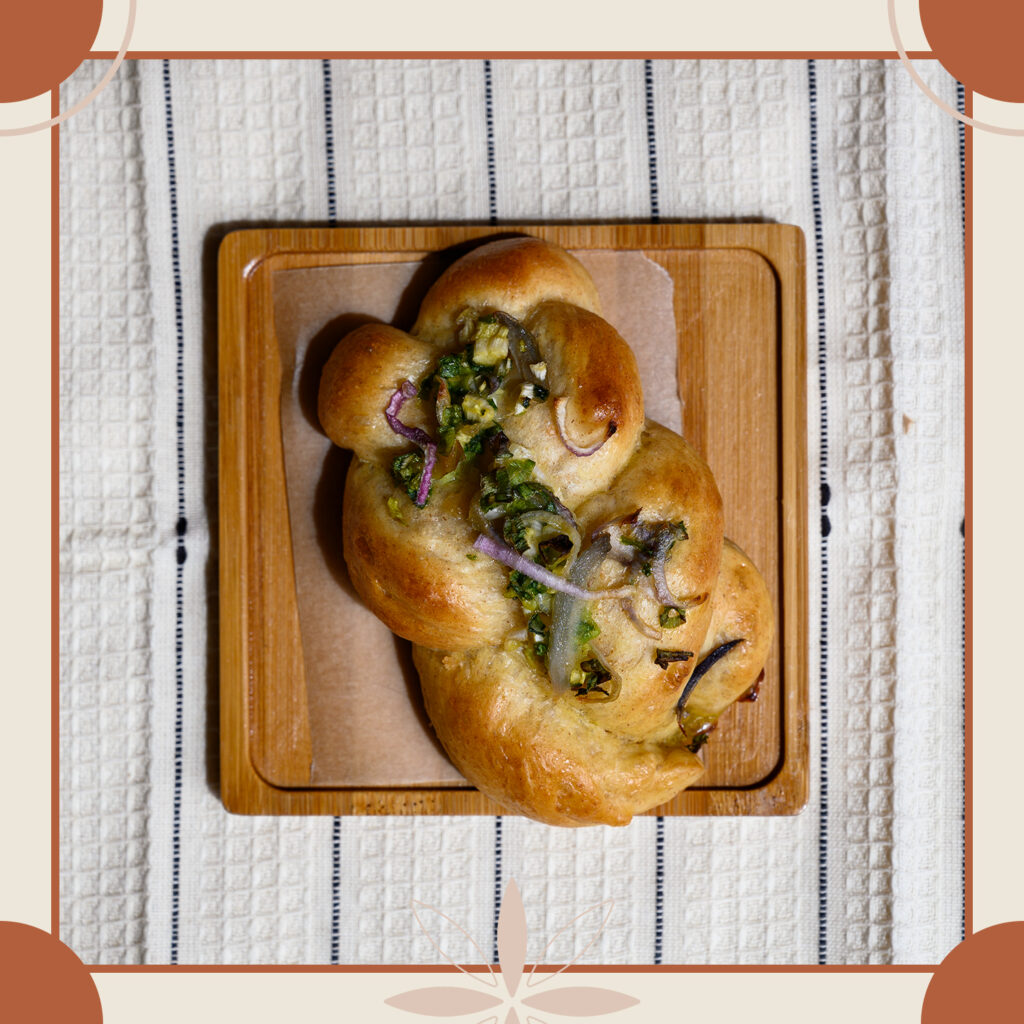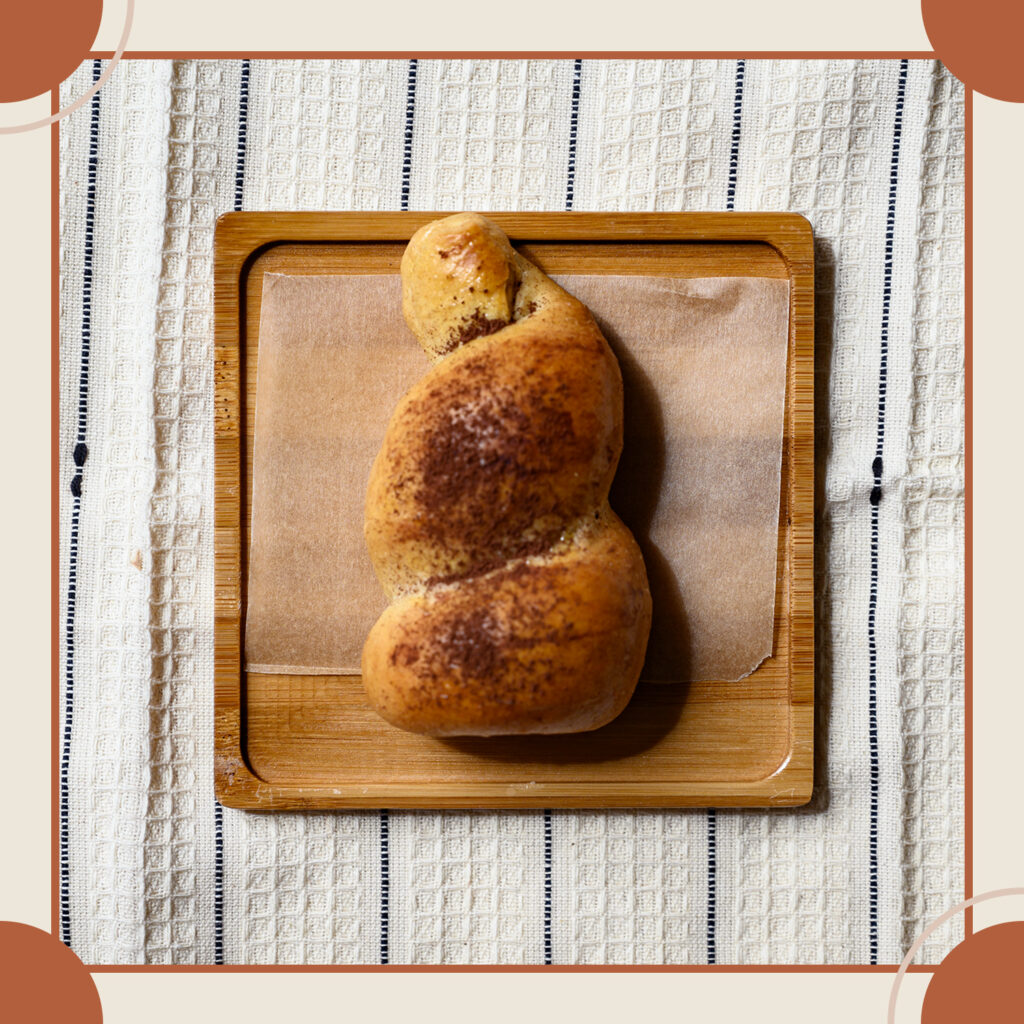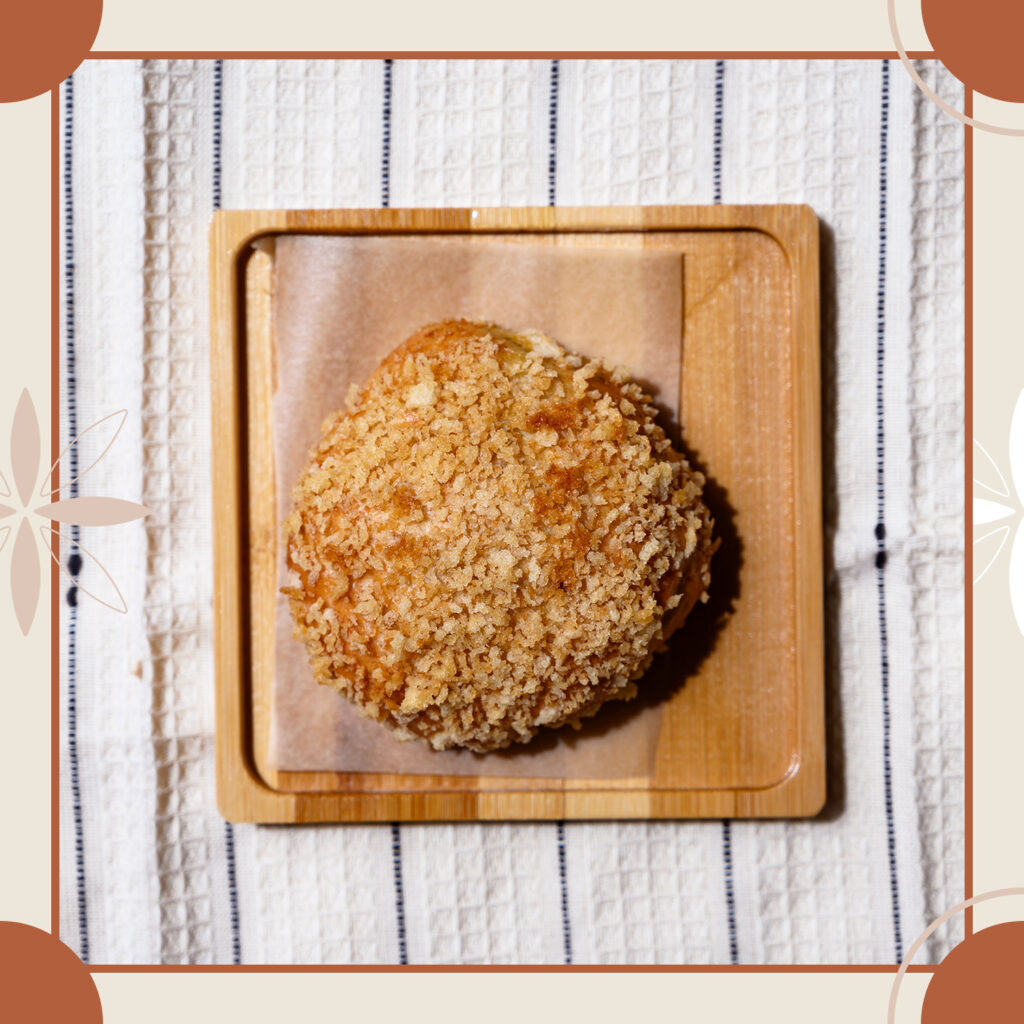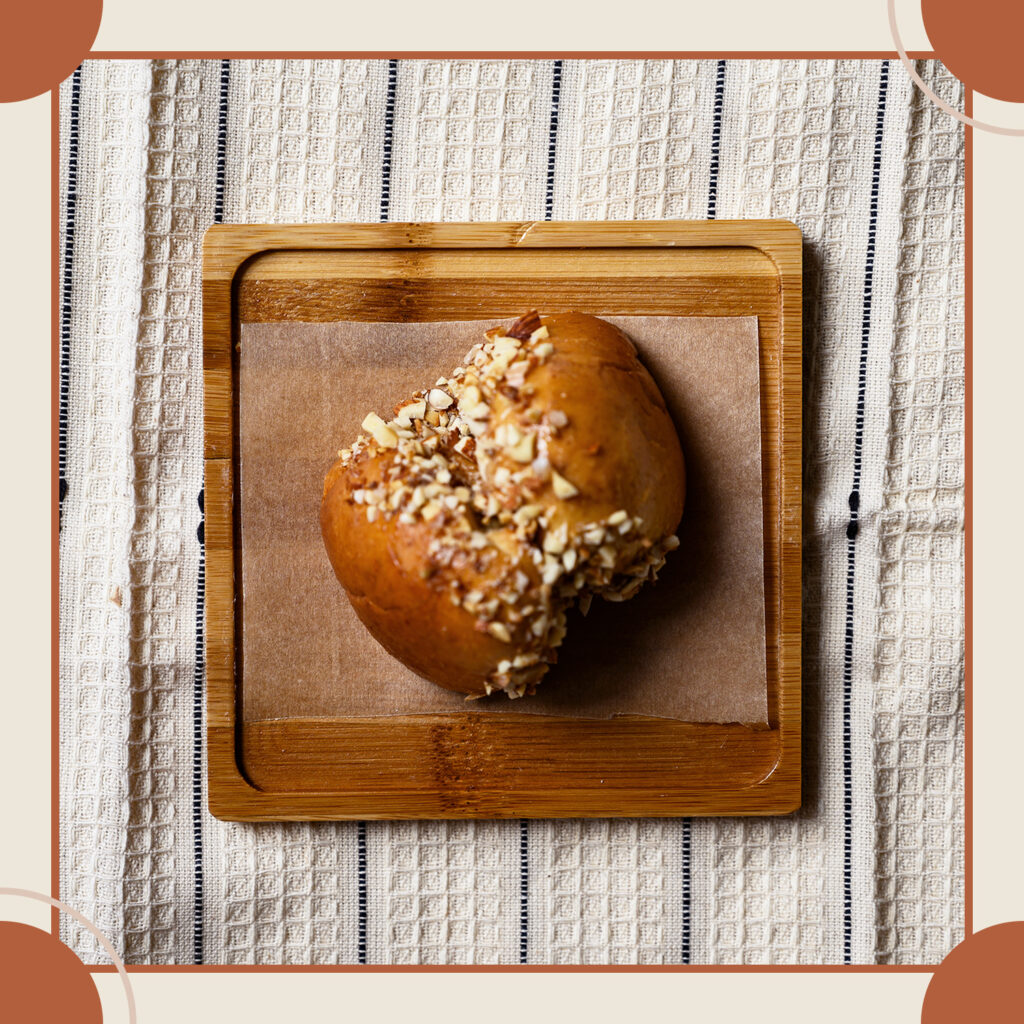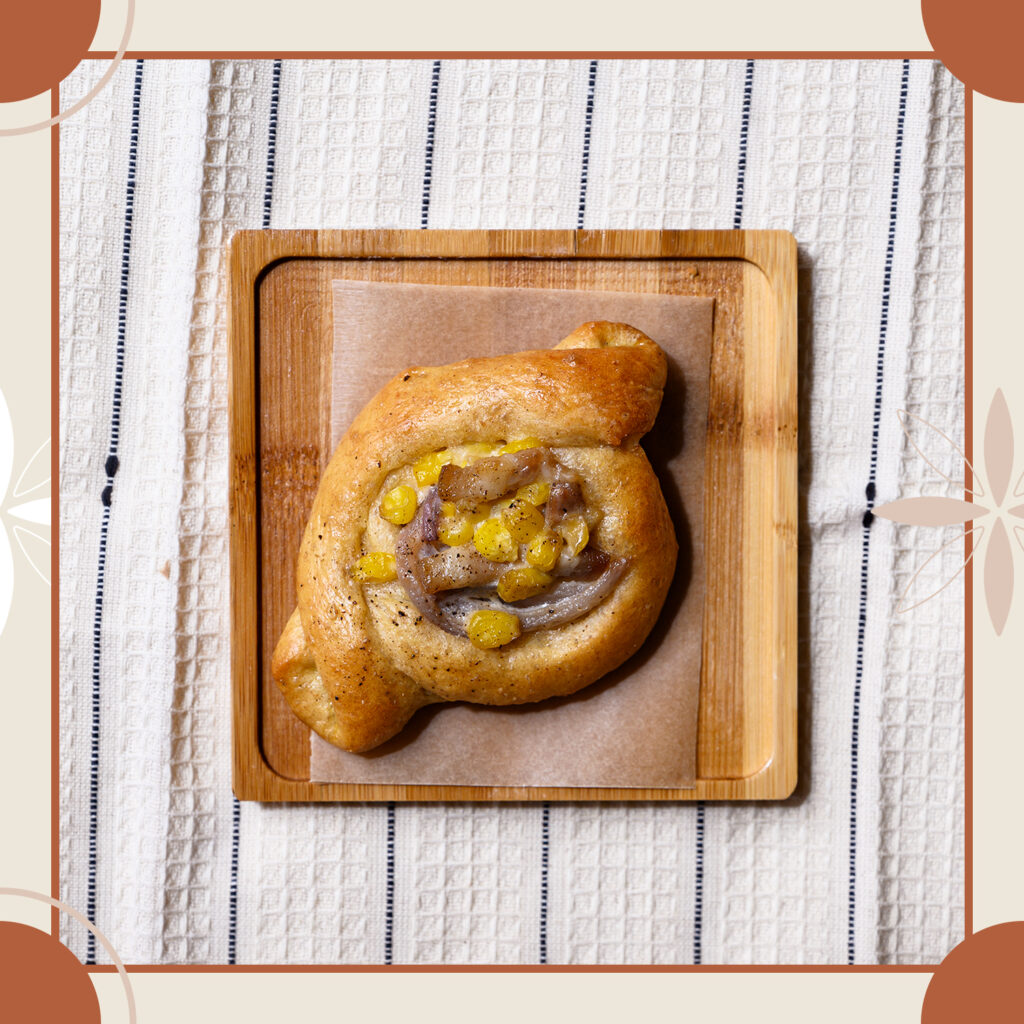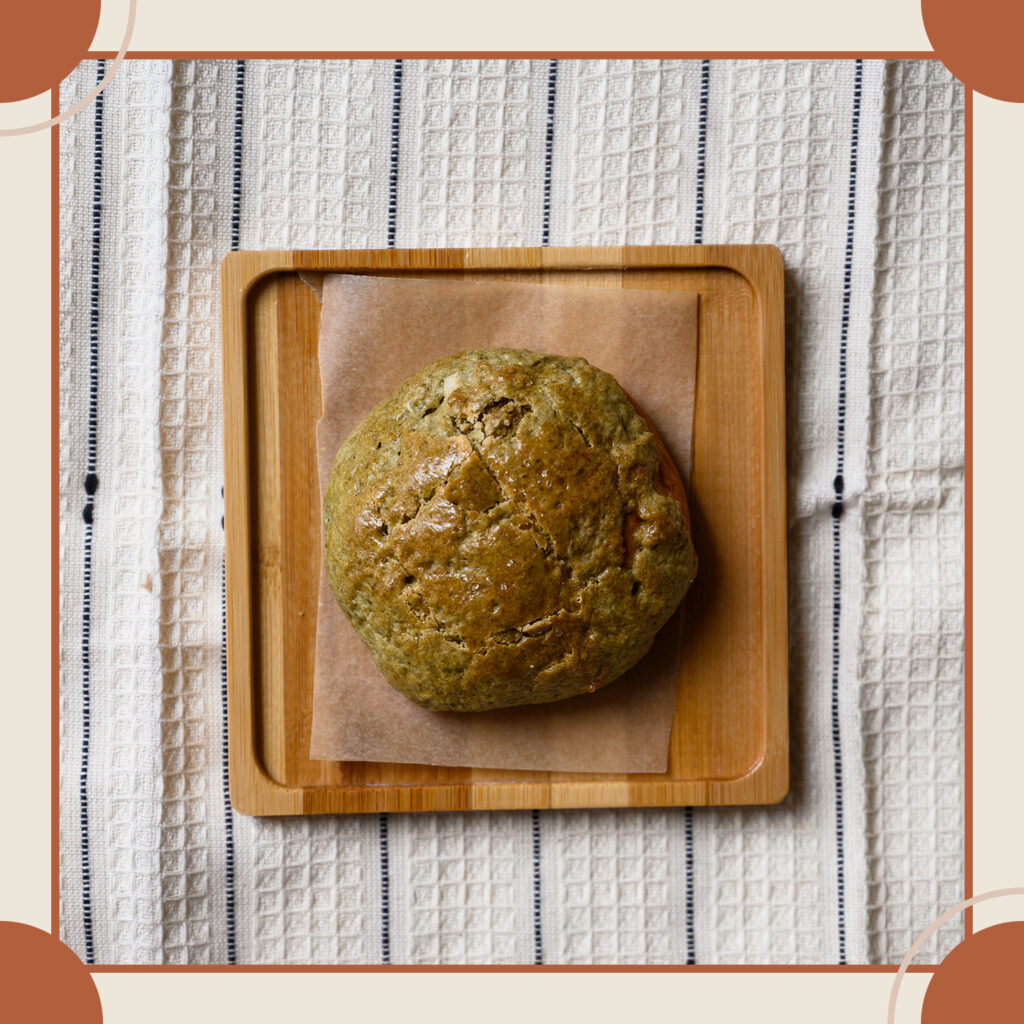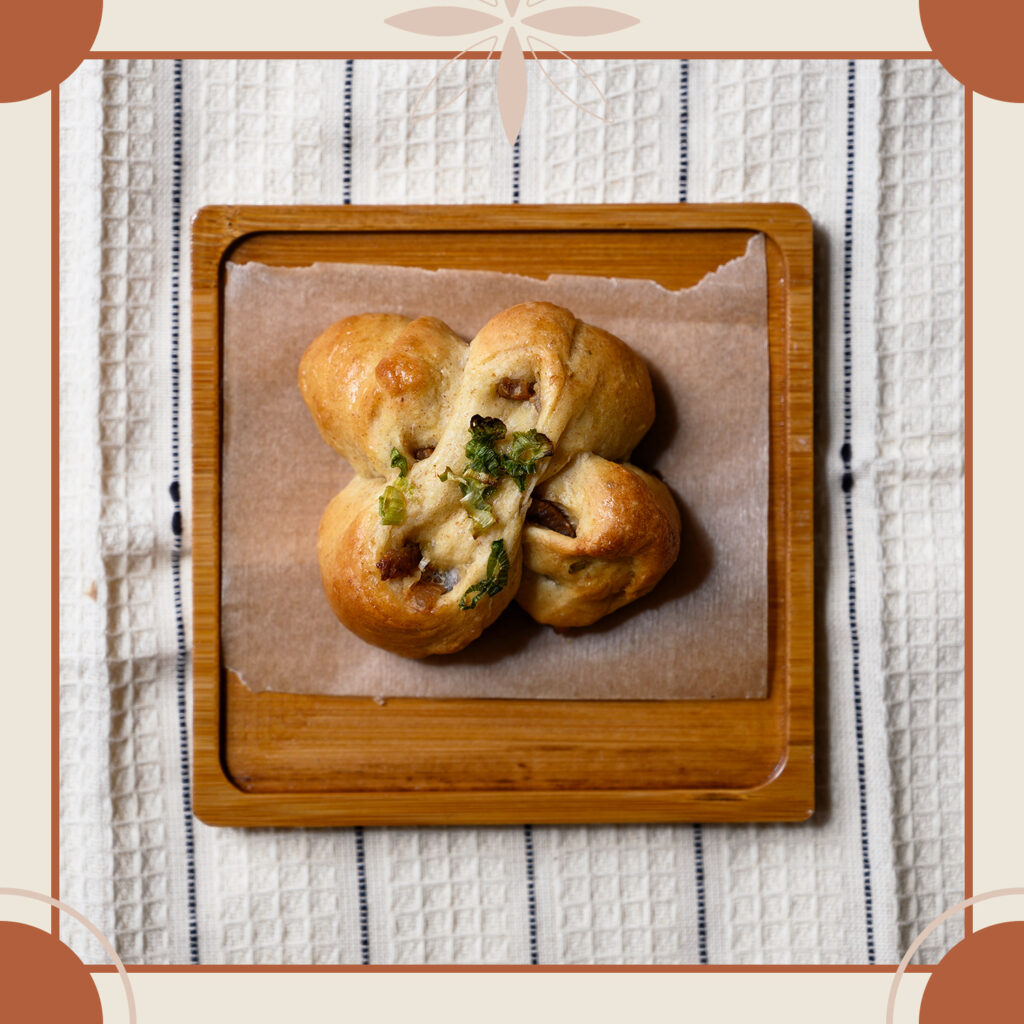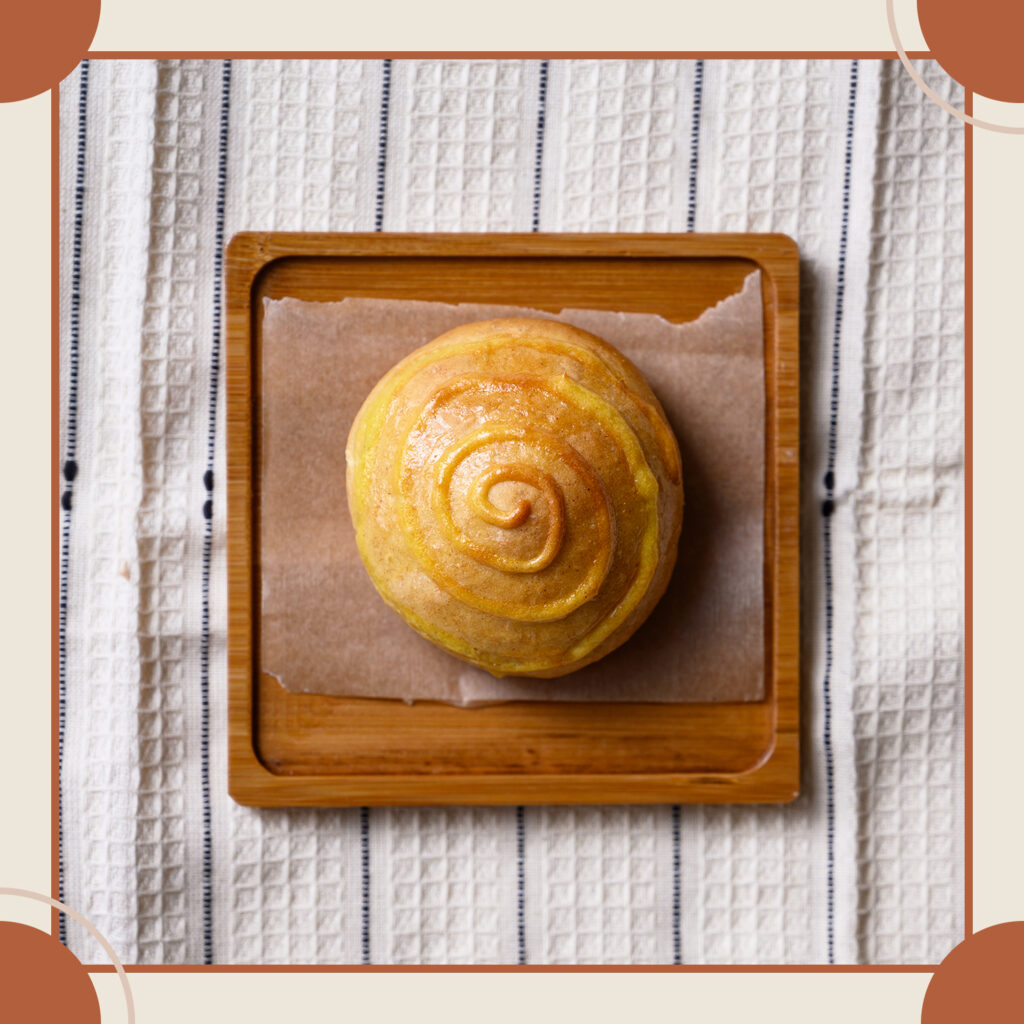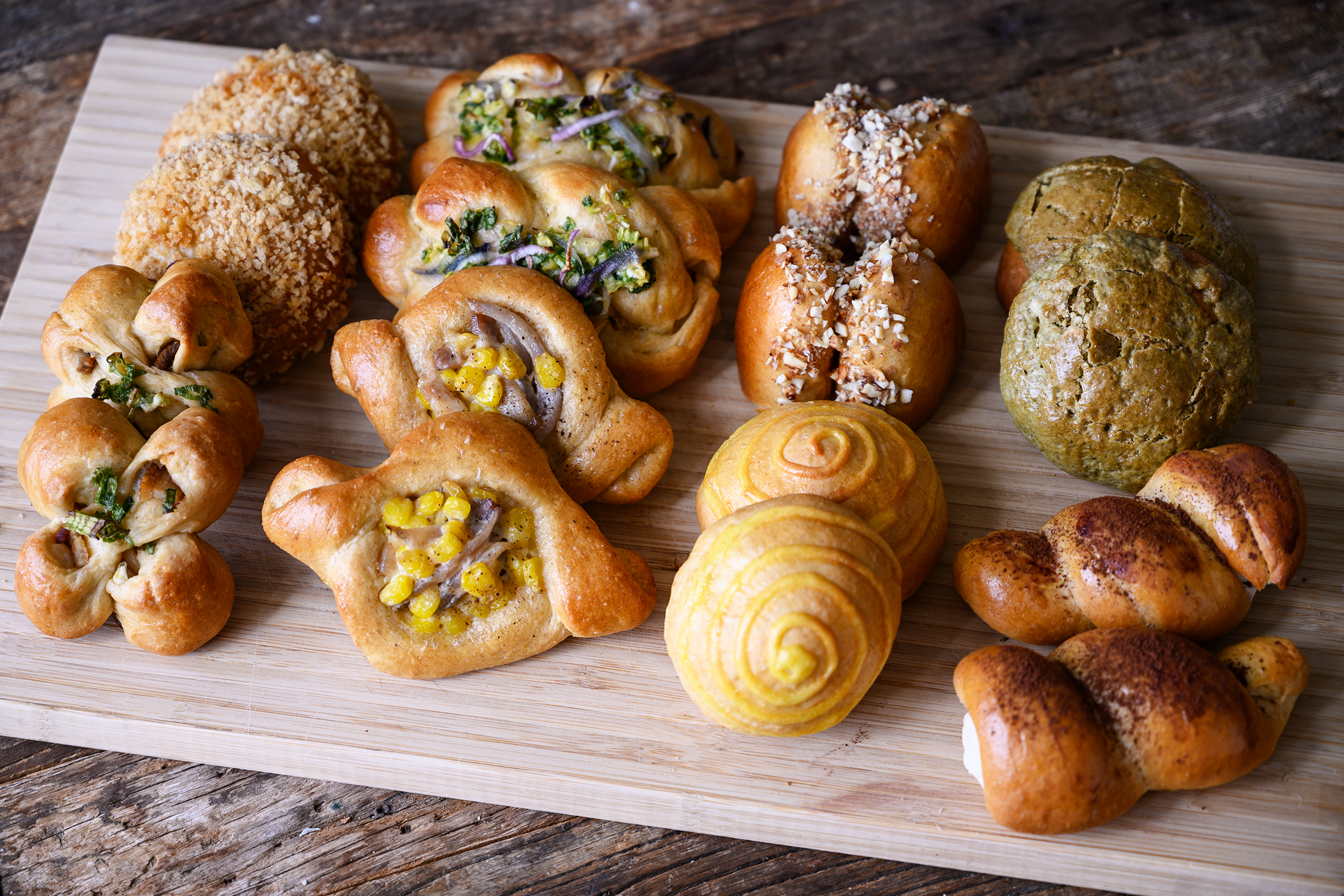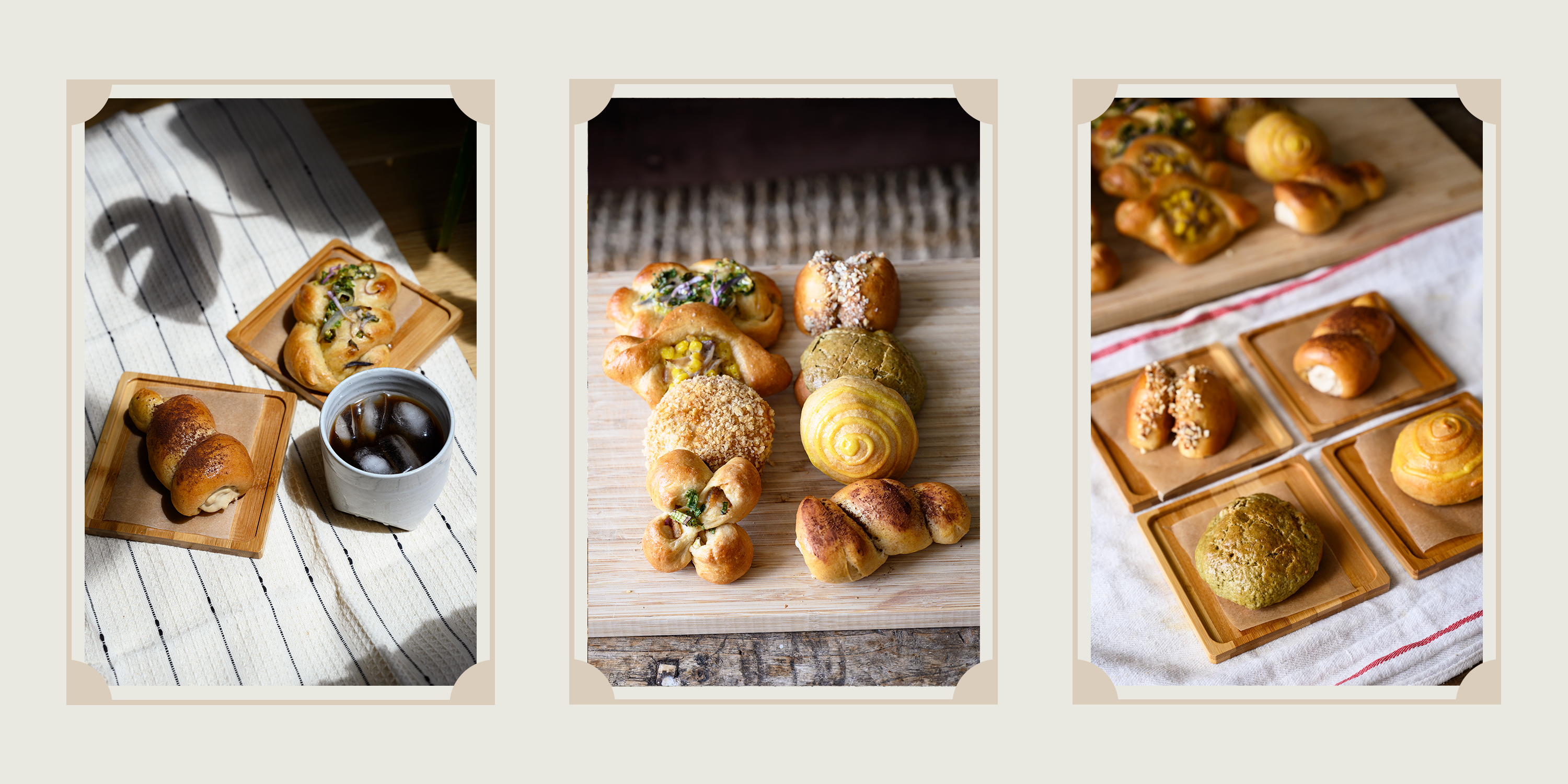
an ode to taiwanese bakeries
a quarantine passion project
If there’s one thing you should know about me is that I love a good bakery as much as I love a good cafe. As in, I can’t simply walk by one without popping in.
Ever since I went to Europe and experienced real bread that wasn’t produced en masse and sold at Costco, I was forever converted. Life is too short for mediocre bread. Bread simply isn’t worth the calories if it isn’t a beautiful bien cuit baguette or crusty ciabatta or buttery brioche or a fresh sourdough loaf. It makes me mad that bad bread exists. I spent half my life thinking I wasn’t into bread because all I ever had was a “baguette” from the grocery store (Trader Joes, you can do better) and pre-sliced sandwich bread packed in plastic.
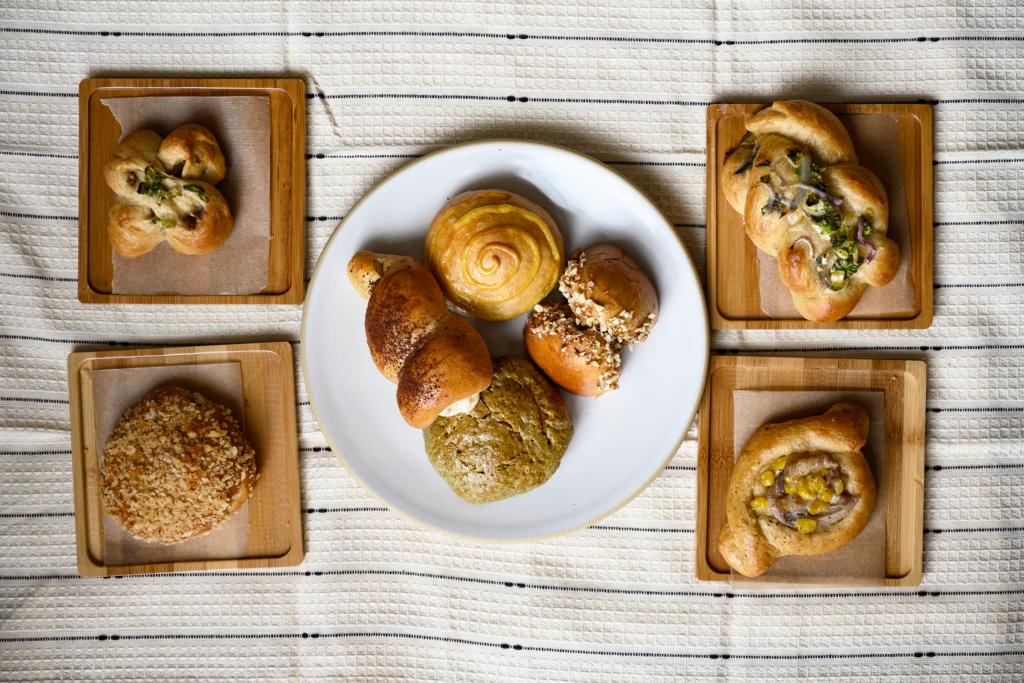
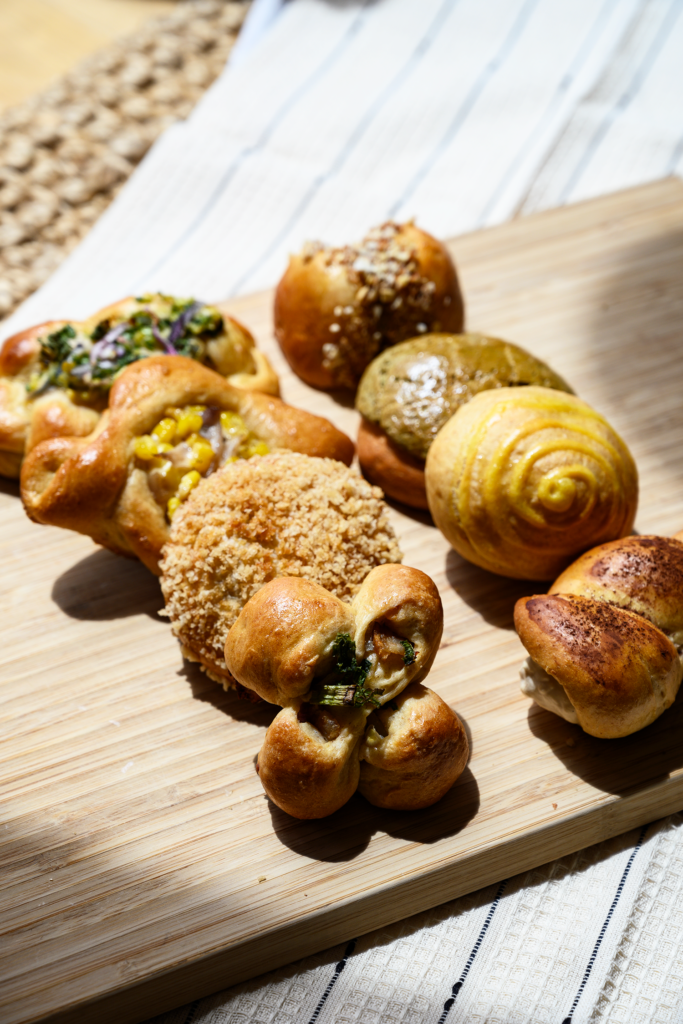
But anyways, I digress. So I love bread. Fresh baked. The smell of a bakery seeping out into the streets. I dream of living above a boulangerie, to wake up to the smell of bread wafting up. But as much as I worship European breads, there will always be a special place in my heart for Asian bakeries.
It’s easy to dismiss them. It looks like bastardized versions of European counterparts. Like, sure you can call it a croissant, but I know you didn’t properly laminate that dough. The soft dough and wimpy crusts (truly going for a different texture profile in this part of the world). And all those flavors. Are they necessary if you have really good bread to begin with?
Well. Let me tell you. Yes. These bakeries might look like they’ve lost their way. But if you think of it as a different genre, you can begin to appreciate the abundance they provide. Glistening. Savory sweet aromas filling the warm room. Whether you’re at Paris Baguette or 85 Degrees or Yamazaki, or an actually good Asian bakery in Asia that hasn’t yet been exported, you start to see patterns. Trends that cross borders. Imported and exported. Riffs on riffs on far removed classics.
Bread in this oven-baked form was introduced to eastern Asia by the Portuguese through Japan. As Japan exerted its influence over the region in the 20th century, they brought with them their interpretations of bread. Over time, local cultures created their own bread traditions. Today, with so much travel and cross-cultural influence among eastern Asian countries, it’s become pretty similar whether you’re in Taipei or Tokyo or Seoul. And with such fierce competition in the market, everything is pretty good across the board.
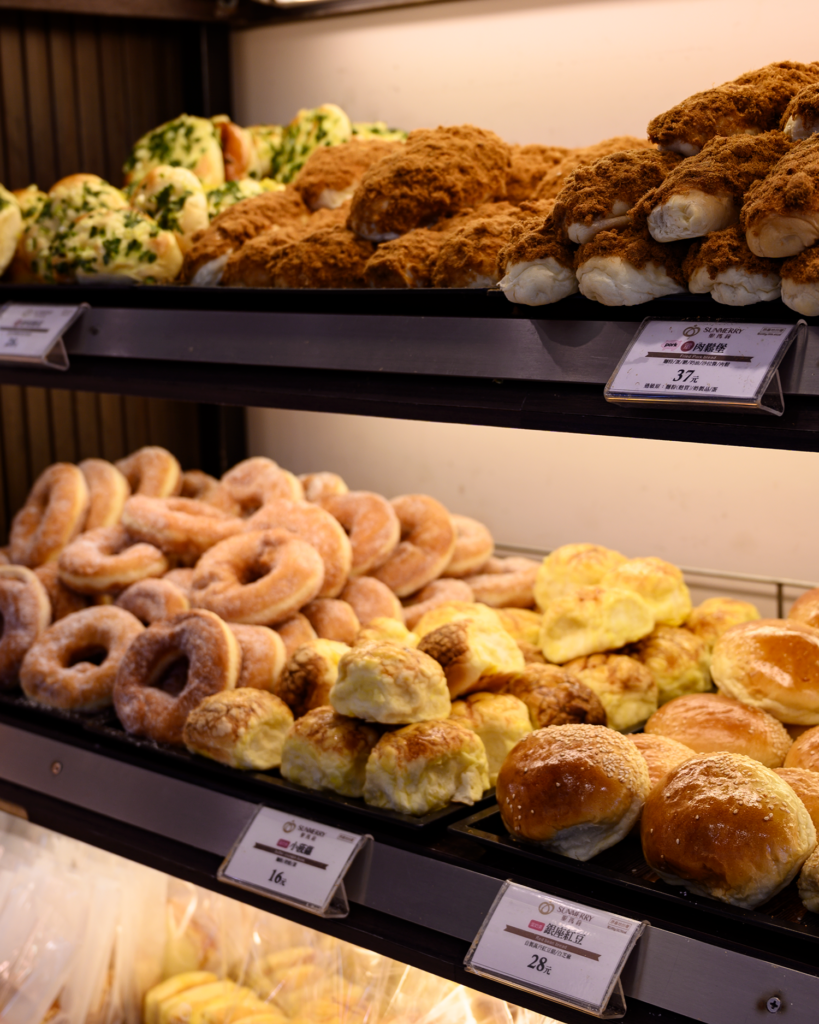
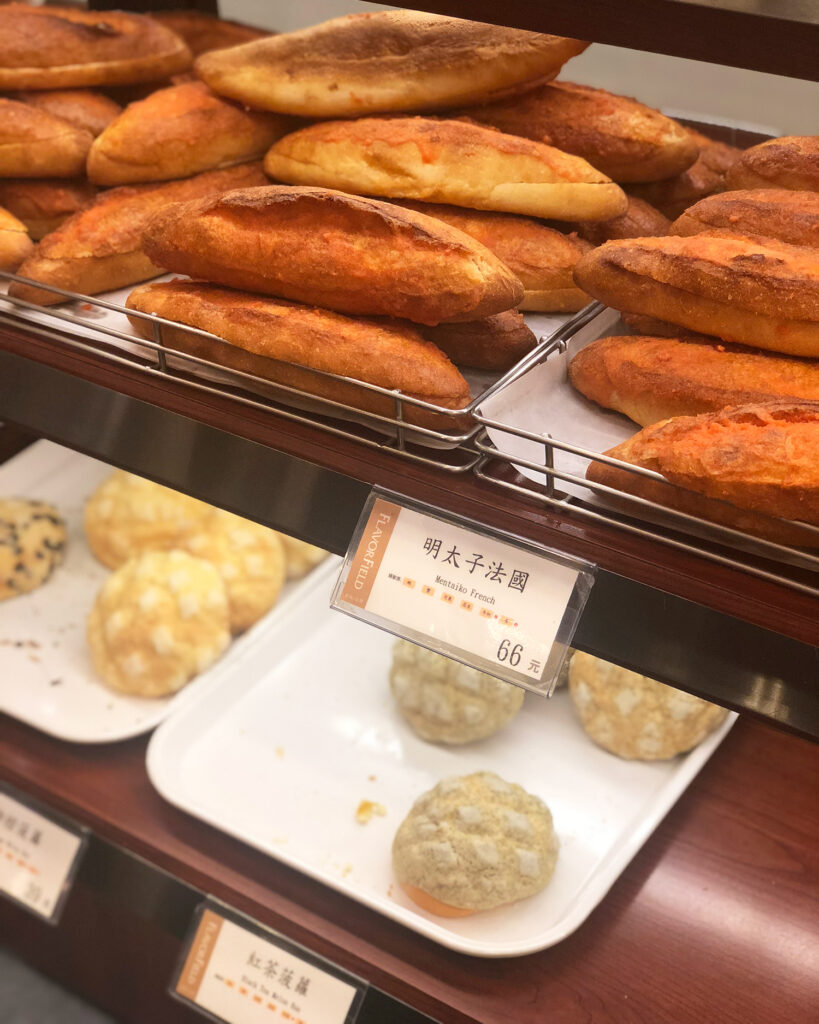
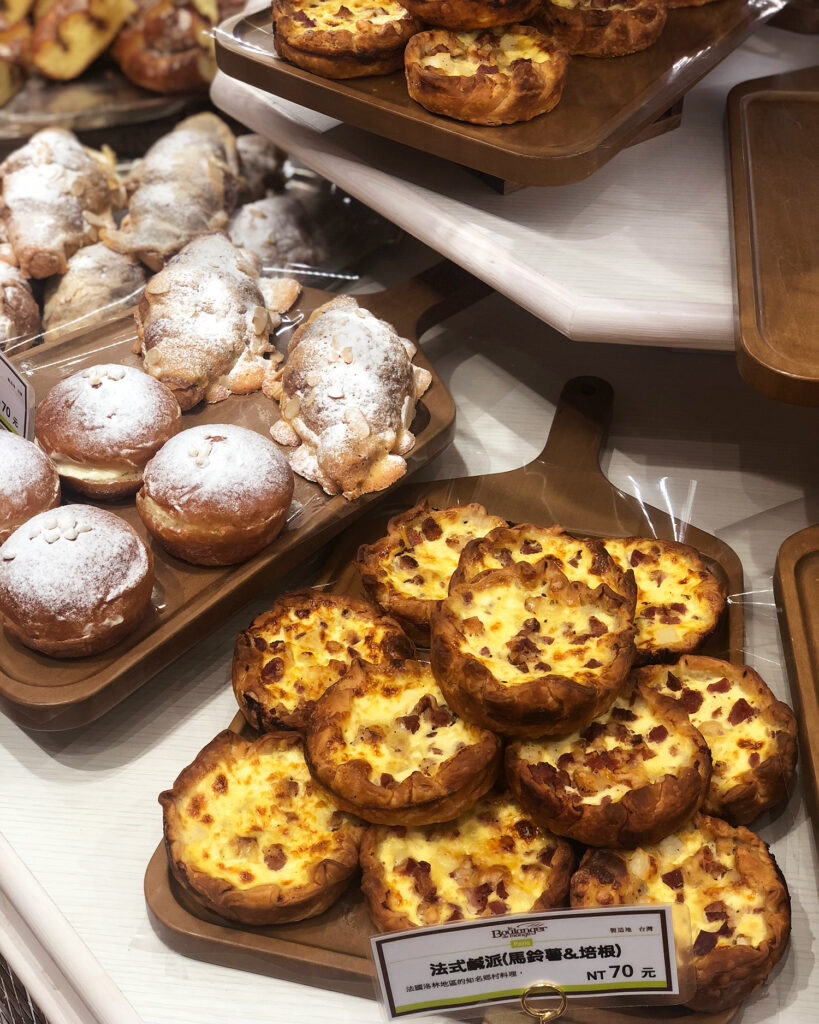
I love where Taiwanese bakeries are now. They’ve hit a sweet spot, taking the best of Japanese-style and European-style breads and combining them with whatever flavors are trending. But sometimes I do appreciate some nostalgia. Back when bread in Taiwan was simple, a few classic iterations made with local ingredients on hand. To be honest, while these traditional breads are still present in modern bakeries, they don’t really call to me compared to the shinier new options. But one day, while innocently scrolling through Instagram, I saw this super cute bakery box of traditional breads in mini form, and so naturally, even though I have never before this made bread, I thought to myself, perfect weekend project.
So anyways, with a little inspiration, a dash of unfounded confidence and a lot of bread flour sitting in the pantry, one thing led to another and soon I found myself in the kitchen at 1am on a Thursday night, trying to figure out how to make bread. This is how it happens, kids. The quarter life crisis of young single millennials suddenly taking out all their anxiety on kneading dough.
The objective: to recreate some classic Taiwanese bakery breads, but with a modern twist.
The strategy: watch a lot of Taiwanese home baking videos and dive deep on poorly designed blogs straight from 2003 to figure out general methodology and a good base bread recipe.
The result: 16 questionably shaped but undeniably cute mini breads that got the photoshoot they deserved.
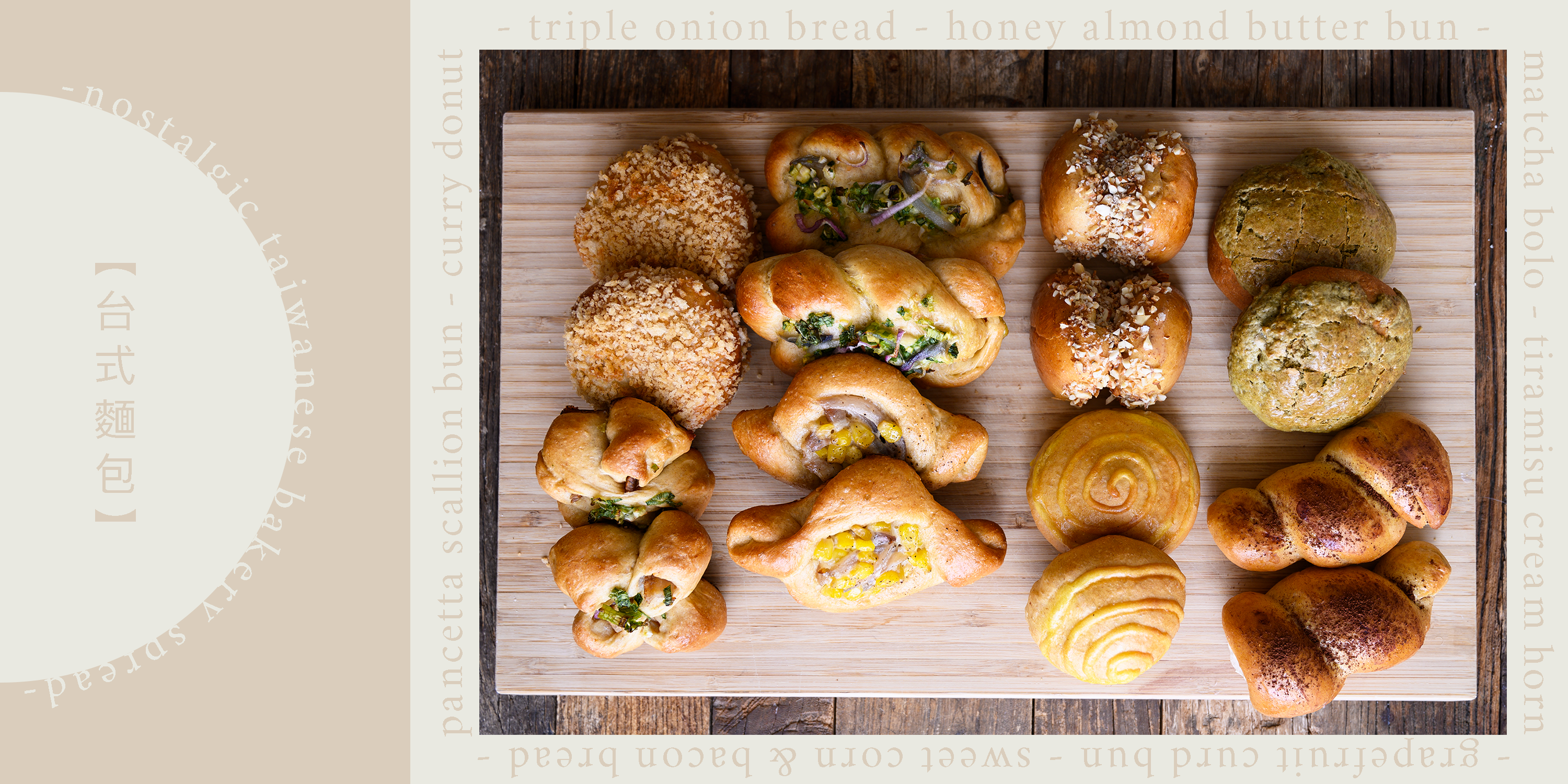
And now the recipes. First, the base dough. I decided to go with one base, generic dough to be the foundation of all of the breads, since the goal was to make a variety. In my desktop research, I did find variations among the different kinds of breads and among different recipes, so I picked the most generic one to go for an ever so slightly sweet bread that works as a sturdy canvas for all sorts of toppings and stuffings.
// BASE DOUGH //
This recipe should make enough dough for 16 mini buns.
ingredients
- 8g milk powder
- 25g granulated sugar
- 2g salt
- 70g cold water (keep ice in it)
- 1 egg (50g)
- 200g bread flour
- 3g instant yeast
- 20g unsalted butter, softened
STEPS
- Stir together milk powder, sugar, salt, cold water and egg in a bowl. Add in flour and yeast and knead (or use a stand mixer with dough hook) until it starts to come together.
- Then add the butter and continue kneading until the dough becomes smooth and passes the window pane test.
- Form it into a ball and let it proof, covered, for about 1-2 hours or until doubled in size.
- Divide into 40-45g portions and roll into smaller balls of dough. Let rest for 10-20 minutes before shaping.
- Once finished shaping, braiding, filling, etc, be sure to let the dough rise again for about an hour until doubled in size before adding egg wash and baking.
- Bake at 360 degrees for 12 – 16 minutes (varies depending on the shape and whether it’s filled), or until the bread is evenly golden. Turn halfway to ensure even baking.
jump ahead:
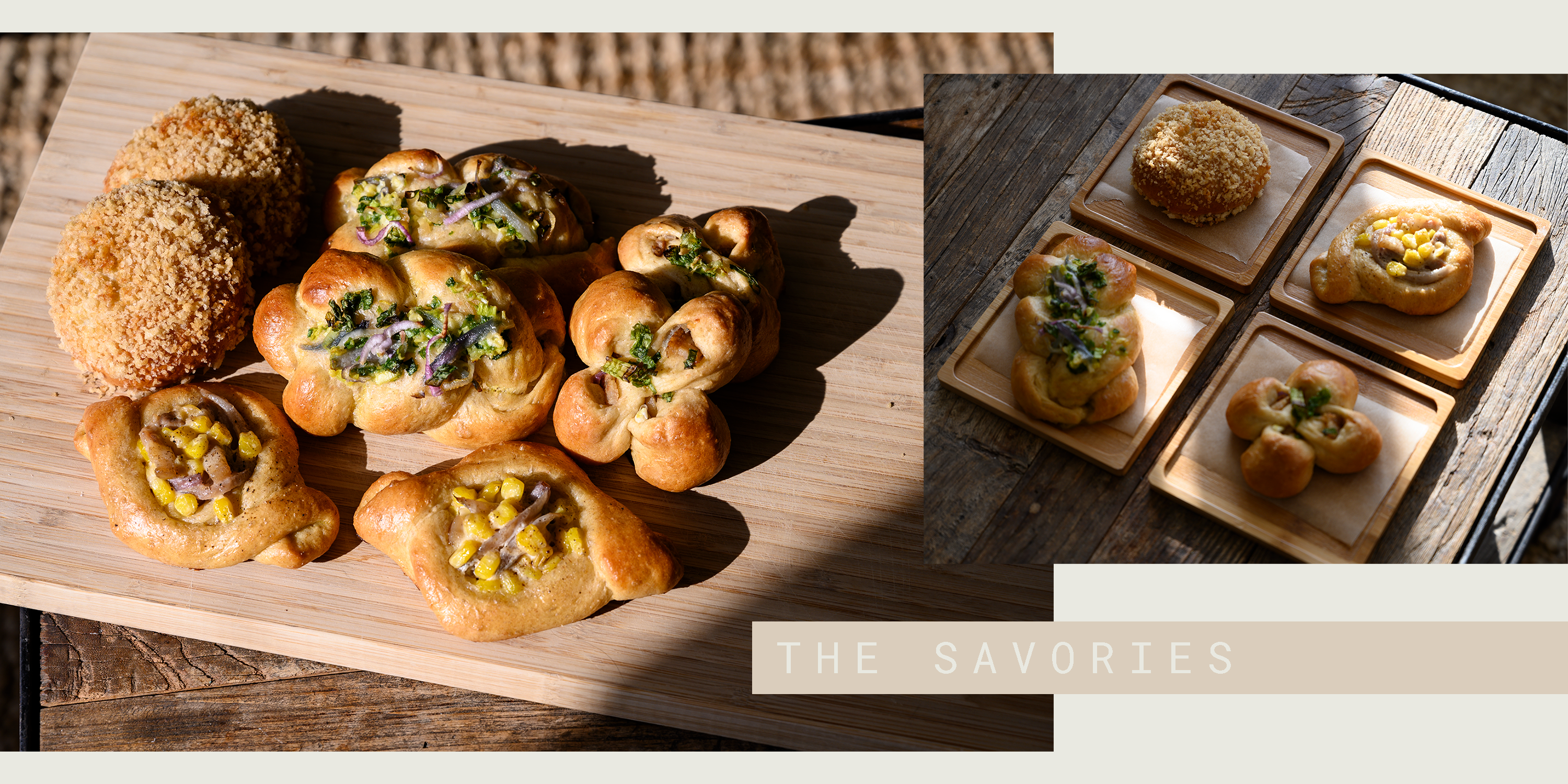
// triple onion bread //
inspired by the traditional scallion bread
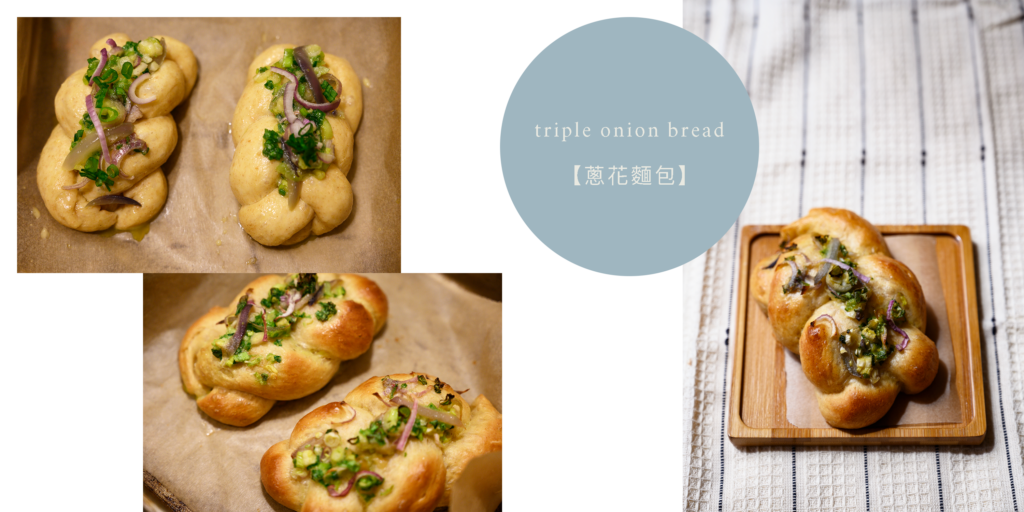
Ah the classic. Scallions are a staple in Taiwanese cuisine, pretty much standard to add to any dish, so why not top off some bread with a heaping scoop of scallions? It was so engrained into my childhood that I never questioned it. It never occurred to me that scallion bread was any different from garlic bread.
I figured the one thing that could make it even better is to make it even more onion-y. And another staple of a Taiwanese kitchen is shallot oil. So I swapped out the usual vegetable oil for a punchier fresh batch of shallot oil, added some shallots and onions to the mix and created a plus up version of a childhood favorite.
INGREDIENTS
- Base Dough, divided into 6x 15g pieces
- 1 scallion, chopped
- 1 shallot, sliced thinly
- 1/4 red onion or sweet onion, sliced thinly
- 1 tbsp shallot oil
- about half a beaten egg (or just borrow from egg wash)
- salt, white pepper, sugar to taste
steps
- Roll out 3 pieces of dough into long strips. pinch one end together and braid, tucking each piece from under until you reach the end, and then tuck the end back in under the bread. Let rise for about 45-60 minutes or until doubled in size.
- Combine the onions with the oil, egg and seasoning.
- Top each plaited dough generously with the onion mixture. Brush the dough thoroughly with eggwash before baking.
- Bake at 360 degrees for about 15 minutes or until golden, turning halfway.
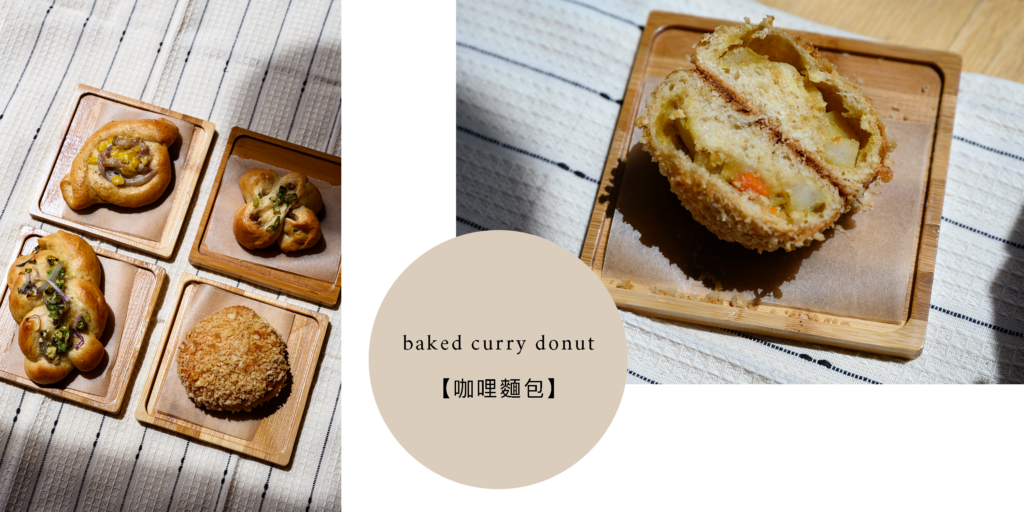
// baked curry donut //
inspired by japanese currypan
Ah the curry donut. This one I’ll admit I found a little strange when I first encountered it. But mostly I was mad. Not mad that someone had the audacity to put curry into a donut, but mad that this wasn’t a more popular practice. I mean, Japanese curry is a classic comfort for me, and if you wrap it with bread and deep fry it, what’s not to love? Savory fried bread! Genius!
I actually had some leftover curry which made this a fast one, but it’s not hard to whip up a tiny batch of curry in a pinch (although it feels weird to be making any less than a whole vat of it). I also opted to bake instead of fry it. Look ma, healthy.
INGREDIENTS
- Base dough, divided into 2x 40-45g pieces
- Curry Filling
- 1/2 small onion, diced
- 1 small carrot, diced
- 1 stalk of celery, diced
- 1 small potato, cubed
- ground beef if desired
- Panko
- Egg wash
steps
- Make the curry filling: cook down onion, carrot and celery (and meat if using) in some butter or oil until softened. Add curry powder, salt, pepper and sugar to taste. Add potato and a cup of water or stock and cook over medium heat until the potatoes break apart easily and the roux is thickened. Set aside to cool.
- Toast the panko in some oil until golden. Set aside to cool
- Roll out each piece of dough into a circle slightly bigger than your palm. Fill with about a tablespoon of curry, and carefully pinch to close and shape into a ball. Let rise for about 45-60 minutes.
- Apply egg wash liberally and then cover with panko so it sticks. Bake at 360 degrees for about 15 minutes, turning halfway.
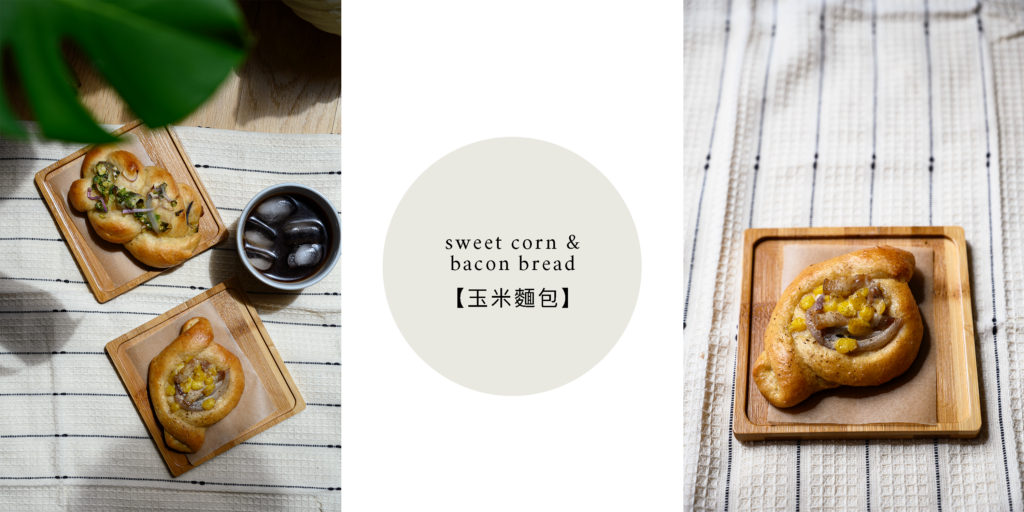
// sweet corn & bacon bread //
inspired by taiwanese corn bread
Ok there’s also this weird obsession with corn in Taiwan where they love to have it in gloopy “cream soups” and sometimes even packed together into nuggets and deep fried to trick innocent chicken nugget loving American children like me. I mean, it’s not the worst, but if you’re expecting a chicken nugget, it is pretty disappointing to be met with a sweet corn mixture. It’s like expecting a chocolate chip cookie only to realize you grabbed an oatmeal raisin. Devastating.
But anyways, I digress. The point I was trying to make is that corn appears in really random places in Taiwanese food and one example of this is in bread that is an entirely different genre from what we in America know as cornbread. The key here is to mix the corn with some mayo to achieve the tart creaminess in the nostalgic flavor profile. I zhuzhed it up by first sautéeing the corn with pork belly, onion and shallot because we deserve more flavor.
INGREDIENTS
- Base dough, divided into 2x 40-45g pieces
- 1/4 cup of corn (cooked)
- 1 piece of pork belly, cut into thin strips
- 1/4 small red onion, thinly sliced
- 1/2 shallot, thinly sliced
- soy sauce, salt and white pepper to taste
- 1 tbsp mayo (preferably kewpie)
- fresh cracked black pepper
- Egg wash
steps
- Roll out each piece of dough into a 4in square-ish shape. Make 2 L-shaped cuts on opposite corners about 1/2 in from the edge. Be sure to not cut through so it’s still connected at the top and bottom. Pick up each of the cut corners and tuck one side under another to cross. Let rise for about 45-60 minutes or until doubled in size.
- Sautée the onion, shallot, corn and pork in a little bit of vegetable oil. Season with soy sauce, salt and white pepper. Set aside and let cool before mixing in mayo.
- Fill each little pocket with corn, and crack some pepper on top.
- Apply egg wash and bake at 360 degrees for 12-15 min.

// pancetta cheese scallion bun //
inspired by the iconic hot dog scallion bun
So a common riff on the scallion bread and kid favorite bread is like a mini pull apart scallion bread where each corner is essentially a hot dog roll and the middle is your classic scallion bread. I wanted to try an alternative to hot dogs, so I opted to use pancetta instead for a salty, rich flavor. And cheese because why not. It’s not quite as pretty since it doesn’t hold up the way a hot dog would but it tasted delicious.
INGREDIENTS
- Base dough, divided into 4x 20-22g pieces
- 2 pieces of thinly sliced pancetta or bacon
- Low moisture cheese like parmesan or gruyere, shredded
- 1 scallion, chopped
- 1 shallot, sliced thinly
- 1/2 tbsp shallot oil
- salt, white pepper to taste
- egg wash
steps
- Cook the pancetta until just starting to get some color on each side. Let cool slightly and then roll up lengthwise (so that it is a long roll), and the cut in half.
- Roll out each piece of dough into a long oval, ideally around the same length as the pancetta. Place the pancetta in the middle, add some shredded cheese and then roll the dough over it.
- Make a cut down the middle of the roll, but not all the way. Twist so that the cross section is facing up. Take two of these and lay one over the other so that they are crossing in the middle. Let rise for about 45-60 minutes or until doubled in size.
- Top with scallion mixture and egg wash. Bake at 360 degrees for about 12 minutes.
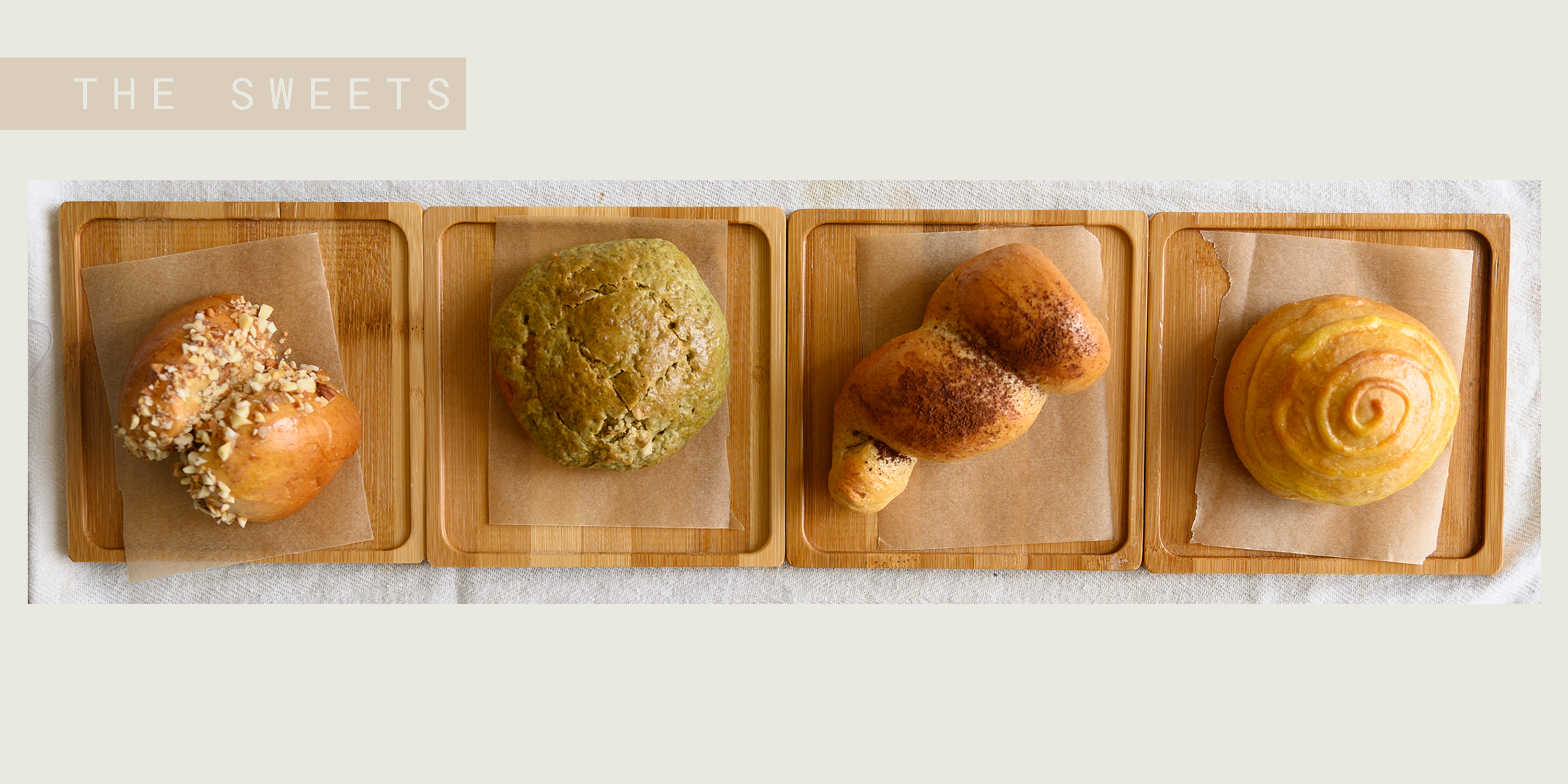
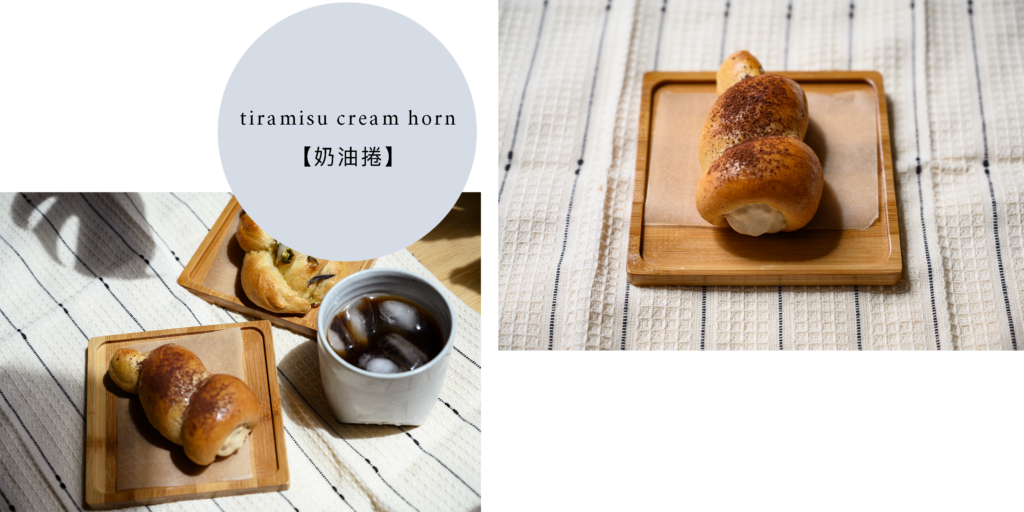
// TIRAMISU CREAM HORN //
inspired by the CLASSIC CREAM HORN
Ah the cream horn. A simple concept. A cone shaped bread filled with whipped cream. What’s not to love? This one was my personal favorite because I love whipped cream. To make it a little more adult, a little more fusion, I added in some marscapone to the whipped cream, and added some instant espresso powder, and then topped off the bread with a nice dusting of cocoa powder.
INGREDIENTS
- Base dough, divided into 2 40-45g pieces
- 1/2 cup heavy cream
- 1 tbsp marscapone
- 1 tbsp powdered sugar
- 1 tsp espresso powder
- cocoa powder for dusting
- egg wash
steps
- If you don’t have cone molds, make some DIY ones with aluminum foil. Spray with oil.
- Roll out the dough into a long strip and wrap around the molds. Be sure to pinch the end and tuck under the mold so it holds. Let rise for 45-60 minutes.
- Brush with egg wash and bake at 360 degrees for 12-15 minutes or until golden.
- Meanwhile, whip the heavy cream to soft peaks. Then add in the marscapone, powdered sugar and espresso powder and whip to stiff peaks.
- Let the bread cool and remove the molds. Then fill with cream and then sift some cocoa powder on top.
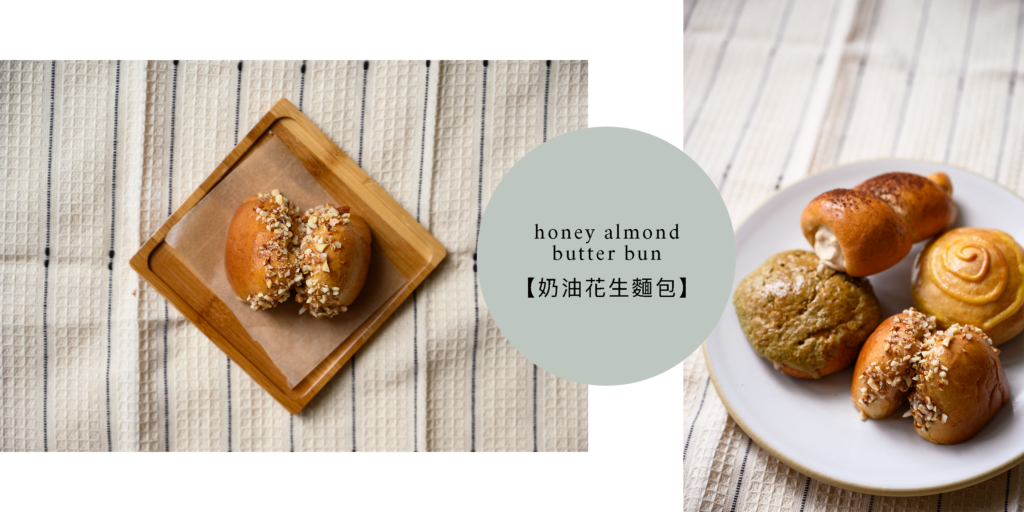
// HONEY ALMOND BUTTER BUN //
inspired by butter peanut bread
There’s an entire sub-genre of breads in Asian bakeries that involve some kind of butter/cream (often confusing because the colloquial term is the same 奶油) and topping combination. The most classic of which is probably the peanut bread. Which makes sense, it’s essentially peanut butter toast in a different form: you spread butter on the outside of the bread and then coat it with peanut powder. Of course, while I have a bunch of assorted nuts in the pantry for all my granola needs, peanuts are not one of them. So I figured I’d upgrade it to almonds to make it more trendy. Not gonna lie, for a hot second I thought about making some jam to make it a PB&J version, but ended up going with my trusty orange blossom honey instead.
INGREDIENTS
- Base dough, divided into 2 40-45g pieces
- 1/4 cup almonds, finely chopped
- 1 tbsp sugar
- 1 tbsp honey
- 1 tbsp almond butter
- 1 tbsp salted butter, softened
steps
- Roll out the dough into a long oval. Bring the long ends toward each other, folding the bottom up and the top down to shape it into a mini oblong loaf. Let proof, smooth side up, for 45-60 minutes.
- Brush with egg wash and bake at 360 degrees for about 12 minutes.
- Combine the chopped almonds and sugar, and toast until golden and caramalized.
- Mix together the honey, almond butter and softened butter and set aside.
- Once the bread has cooled, cut it in half down the middle. Spread almond butter mixture on the flat sides and stick them together.
- Then, spread more of the almond butter mixture along the edges and roll it in the chopped almonds to stick.
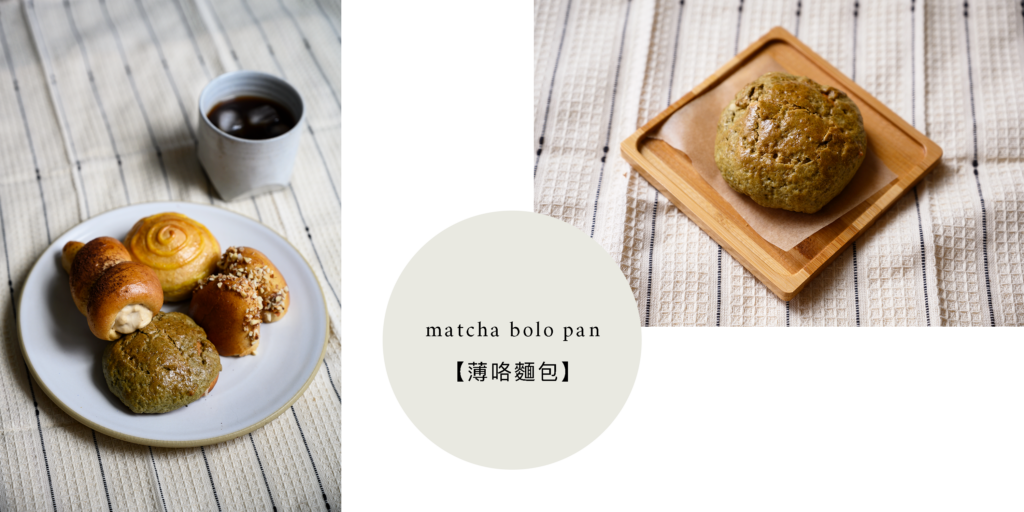
// matcha bolo pan //
inspired by the classic melon or bolo bread
Bolo pans, or pineapple or melon buns are a staples in Chinese bakeries. The crackly golden top is a familiar sight. To be honest, they aren’t my favorite. As in, there are a lot of other breads I’d reach for before going for a bolopan. It’s just a little boring compared to other things you can find in the bakery. That being said, they are hard to turn down when it’s fresh and hot out of the oven. In Cantonese cuisine, they toast them to perfection and slice open the hot bread to create a sandwich with a generous slice of cold salted butter. In Asakusa, there’s a popular vendor who specializes in bolopan stuffed with soft serve. I decided to opt for a simple addition to add some flavor: matcha.
INGREDIENTS
- Base dough, divided into 2 40-45g pieces
- 30g all purpose or pastry flour
- 1 tsp matcha
- 15g unsalted butter, softened
- 15g granulated sugar
- 1/2 tsp vanilla paste
- 12g eggwash
steps
- Combine butter, sugar, vanilla and eggwash until well incorporated. Then add flour, matcha and mix until it comes together. Place it onto a piece of plastic wrap, cover, shape into a disk and refrigerate for at least 20 minutes.
- Shape the base dough into balls. Divide the matcha bolo into two pieces and roll into balls, coating with flour so it doesn’t stick.
- Press each bolo ball into a flat disk and roll out to about 2-3mm thick. Then place on top of each piece of base dough and score. Let rise for 30 minutes.
- Brush with egg wash and bake at 360 degrees for about 12 minutes.
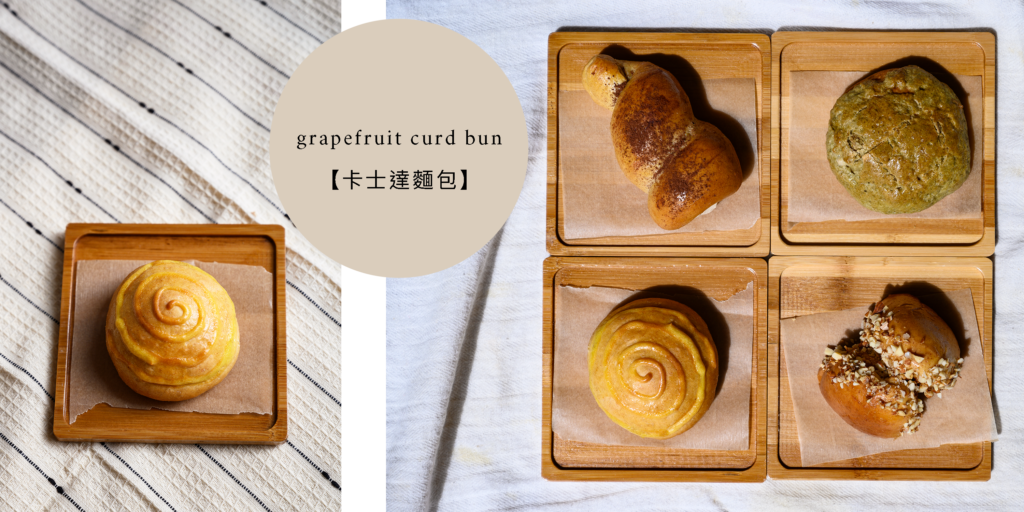
// grapefruit curd bun //
inspired by the custard bun
So custard is one of those things that truly got bastardized when it was imported into Asia. Pretty much every recipe of custard I’ve encountered includes cornstarch. And maybe because of that, I never understood the appeal of custard growing up. But anyways, one thing I do appreciate that is custard-adjacent is lemon curd. What I love even more is grapefruit. So I thought, why not swap out the mediocre custard situation and swap it out for some grapefruit curd? All said, you do need to add some flour to the curd or custard for it to hold its form better when you bake it.
INGREDIENTS
- Base dough, divided into 2 40-45g pieces
- 1 egg yolk
- 2 tbsp grapefruit juice
- 1 tsp grapefruit zest
- 1 tbsp butter
- 1/4 cup sugar
- 1 tbsp flour
- Egg wash
steps
- Combine egg yolk, grapefruit juice, zest and sugar in a small pan over very low heat, stirring constantly. Once it starts to thicken, add in the butter and flour and continue stirring until it gets a thick consistency. Set aside to cool and then fill it into a piping bag.
- Press out each piece of dough into your palm and add some curd to the center and wrap the dough around, pinching closed and rolling into a ball. Let rise for 45-60 minutes.
- Brush the top of each bun with egg wash. Pipe a swirl of curd on the top of each one.
- Bake at 360 degrees for about 12 minutes.
